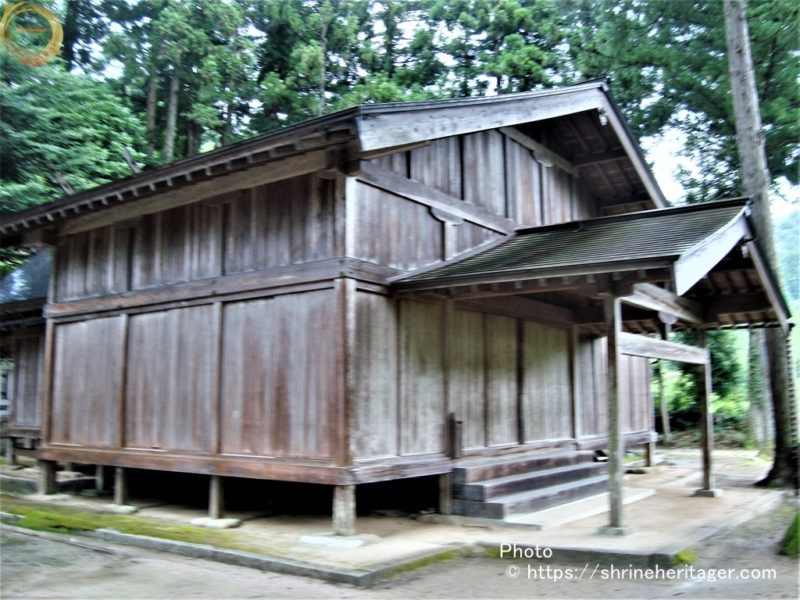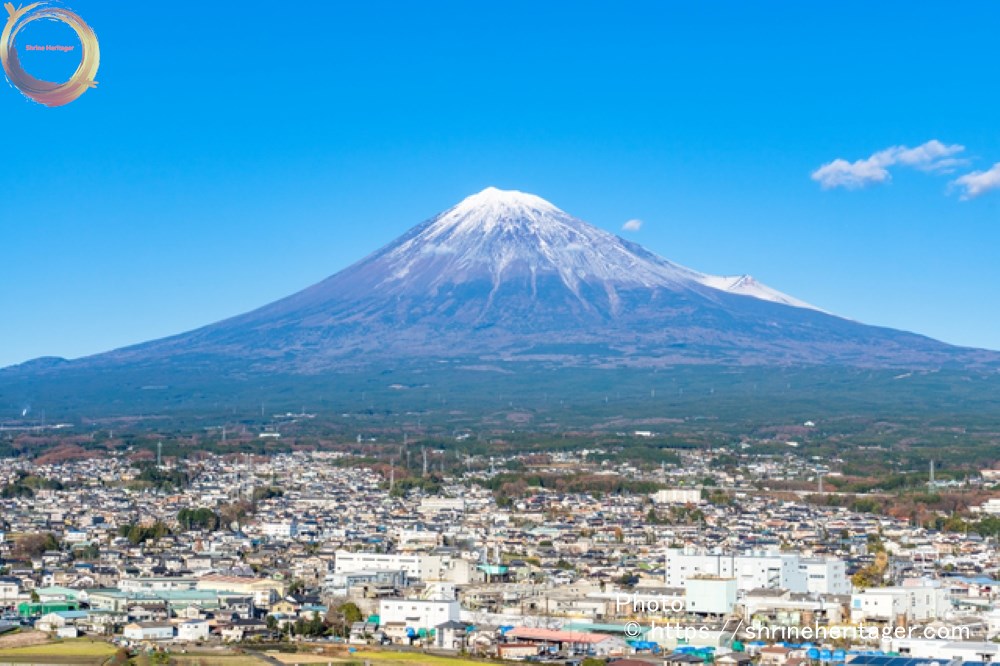It is Iiishi Shrine (Takuwa). "Ibiuzushio no mikoto" has the rock solid as the god when it descends from the heavenly world. The "iwa kura" is surrounded by Aragaki and sits in the back of the worship hall. You can worship the Shintai directly. It conveys the ancient form of the sacred place called "iwa kura".
目次
- 1 【約1300年前】About 1300 years ago
- 2 【約1100年前】About 1100 years ago
- 3 【現在】At the moment
- 4 【神社にお詣り】(Pray at the shrine)
- 5 【神社の伝承】(Old tales handed down to shrines)
From here, I will explain the name of the listed shrine in chronological order.
First of all, "Izumo Kaoru Fudoki" was completed on February 30, 733, about
1300 years ago. Next, the Enki-style God Name Book, which was completed about
1100 years ago and in the middle of the Heian period (extended 5 years and 927 years), is the last of the "Izumo-an Fudoki" and "Enki-style God Name Book" (present-day shrine).
【約1300年前】About 1300 years ago
【出雲國風土記(izumo no kuni fudoki)所載社(Place of publication)】
The shrine record was completed in February 733 AD.
飯石神社(iishi shrine)
【國】 出雲國(izumo no kuni)
【郡】 飯石郡(iishi no kori) 条
神祇官社(jingikan no yashiro )
【社名】 飯石社
【読み】(いいし の)やしろ
【How to read】(iishi no) yashiro
国立公文書館デジタルアーカイブ『出雲国風土記』写本
https://www.digital.archives.go.jp/DAS/meta/listPhoto?LANG=default&BID=F1000000000000003351&ID=&TYPE=&NO=画像利用
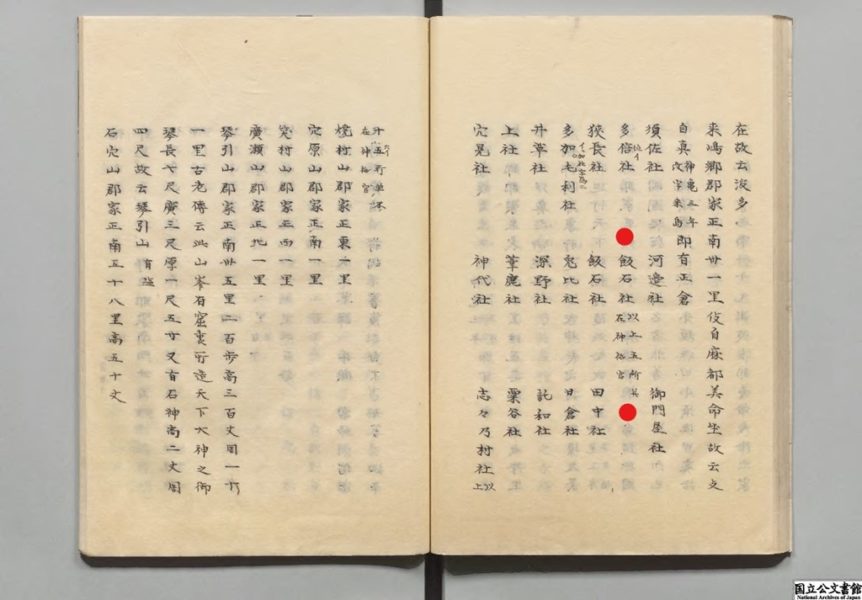
境内社 託和神社(takuwa jinja)
【國】 出雲國(izumo no kuni)
【郡】 飯石郡(iishi no kori) 条
不在神祇官社(fuzai jingikan no yashiro)
【社名】託和社
【読み】(たくわ の)やしろ
【How to read】(takuwa no) yashiro
国立公文書館デジタルアーカイブ『出雲国風土記』写本
https://www.digital.archives.go.jp/DAS/meta/listPhoto?LANG=default&BID=F1000000000000003351&ID=&TYPE=&NO=画像利用
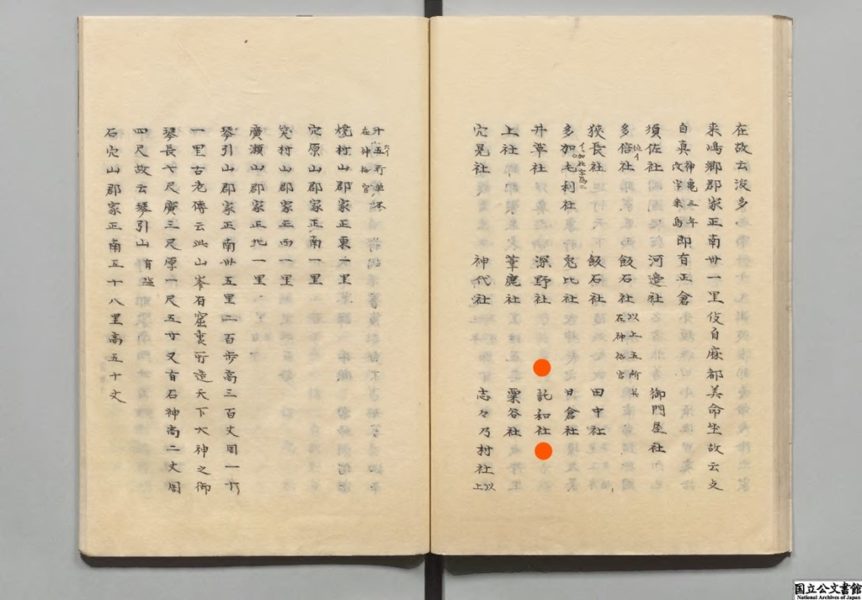
スポンサーリンク
【約1100年前】About 1100 years ago
【延喜式神名帳(engishiki jimmeicho)所載社(Place of publication)】
The shrine record was completed in December 927 AD
【國】 出雲國(izumo no kuni)
【郡】 飯石郡(iishi no kori)
【社名】 飯石神社
【読み】(いいしのかみのやしろ)
【How to read】(iishi no kamino yashiro)
https://dl.ndl.go.jp/info:ndljp/pid/1442211/160画像利用 国立国会図書館デジタルコレクション 延喜式 : 校訂. 上巻(昭和4至7)
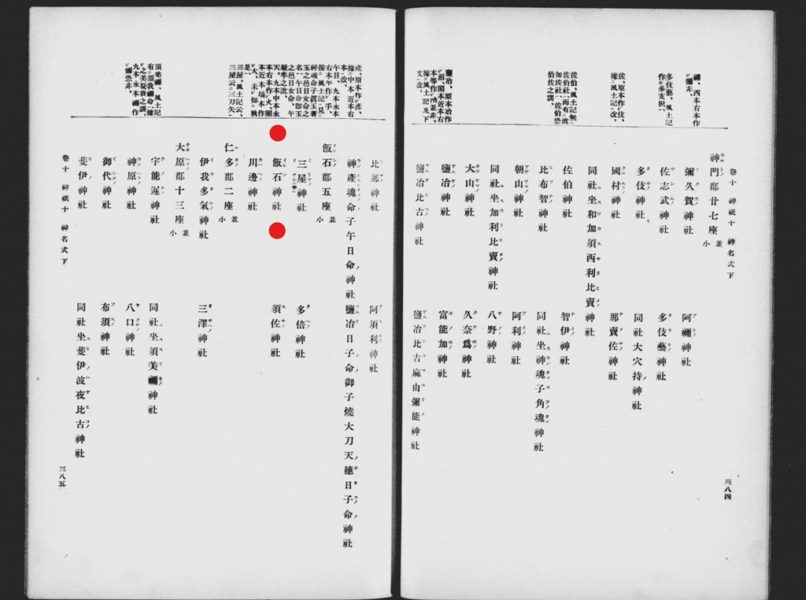
スポンサーリンク
【現在】At the moment
【論社】Current specific shrine
【神社名】(shrine name)
飯石神社(iishi shrine)
(いいしじんじゃ)
【通称名】(Common name)
【鎮座地】(location)
1060-2 Takowa, Mitsutoya-cho, Yunnan City, Shimane Prefecture
【地 図】(Google Map)
【御祭神】(God’s name to pray)
《主》伊毘志都幣命(iishitsube no mikoto)
【御神格】(God’s great power)
・五穀豊穣 Pray for good harvest
・家内安全 Safe and comfortable home life
・家運長久 Continued family happiness
・厄除け Prayer at an age considered a milestone in life
・縁結び Deepen connections and intimacy with people
【格式】(Rules of dignity)
・『出雲國風土記(izumo no kuni fudoki)』所載社
・『延喜式神名帳(engishiki jimmeicho )』所載社
【創建】(Beginning of history)
神代 Age of God
命の天降られた盤石を御神体とし、二重の玉造りで囲み本殿にかえている。
通殿、拝殿を配し 直接神体を拝むことができ、磐境、磐座という古代の聖地形態を伝えている。
またこの地を命の降臨の聖地として注連縄を用いず、境内には摂社、末社は勿論、随神門、灯篭、狛犬はなく・・・・・
Shimane Prefectural Shrine Office website
【由緒】(history)
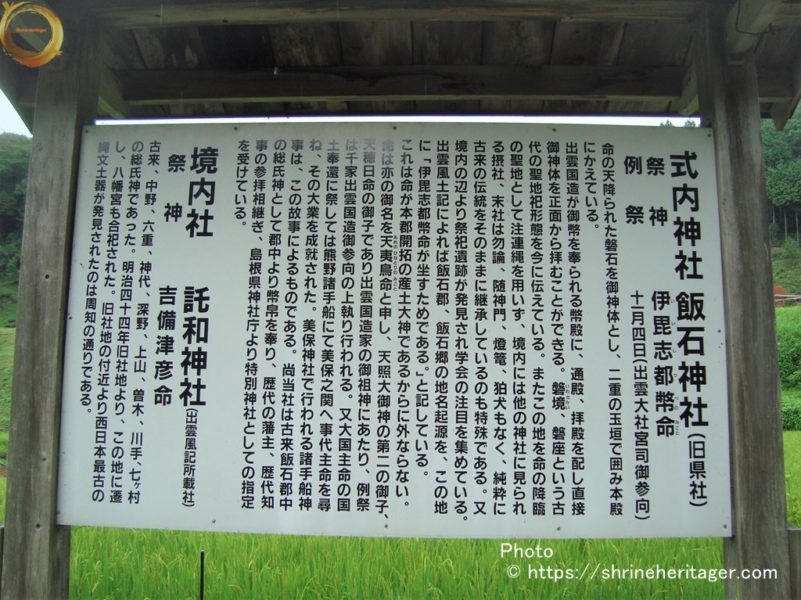
出雲国風土記に飯石社、延喜式に飯石神社とみえる式内社で、
出雲国風土記に飯石郡の条に「飯石と号くる所以は、飯石郷の中に伊毘志都幣命坐せり。故飯石と云ふ。」また「郡家の正東12里なり。伊毘志都幣命天降り坐しし処なり。故伊毘志と云ふ。」(神亀3年に字を飯石と改む)とあり、伊毘志都幣命の天降りましたと伝える磐石が御神体となっているので、本殿はなく、幣殿、通殿、拝殿を配している。
即ち磐境、磐座という自然信仰の形態をそのままの姿で現在に伝えている。又、この地を命の降臨の聖地として、古来注連縄を用いないのも特殊の習慣である。明治44年8月の遷宮工事の際、御霊代の本殿磐石のかたわら境内の字迫から、古墳時代の祭祀用遺品とみられる高坏、壷などの須恵器類が出土した。
御祭神 伊毘志都幣命は 天照大神の第二の御子天穂日命の御子で、天夷鳥命、武夷鳥命とも云い、国譲りに際して 三穂之崎に事代主神を尋ね 国土奉還の大業を成就された神であるとされている。
その時に使用された船を 熊野諸手船という。伊毘志都幣命は、出雲国造家の祖神にあたるため、古来 正遷座祭には出雲国造御参向のうえ、奉幣を奉られる習わしであったが、近年(昭和42年以降)に至り、例祭にも 国造御参向が慣習となっている。
「全国神社祭祀祭礼総合調査(平成7年)」[神社本庁]から参照
【境内社】(Other deities within the precincts)
・託和神社(takuwa jinja)《主》吉備津彦命(kibitsu hiko no mikoto)
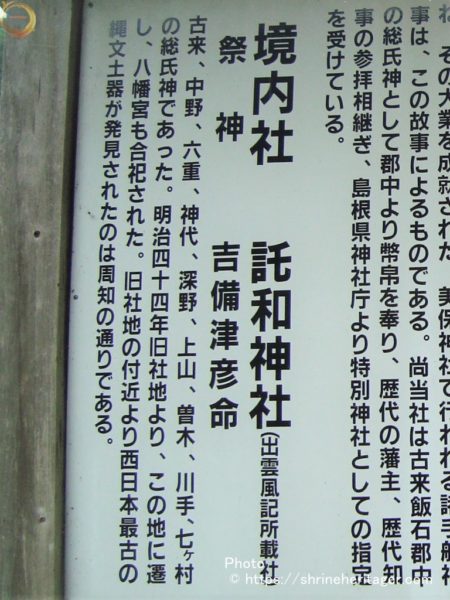
境内社 託和神社 (出雲風土記所載社)
祭 神 吉備津彦命
古来、中野、六重、神代、深野、上山、曽木、川手、七ヶ村の総氏神であった。
明治四十四年旧社地より、この地に遷し、八幡宮も合祀された。旧社地の付近より 西日本最古の縄文土器が発見されたのは周知の通りである。From the information board
【オタッキーポイント】(Points selected by Japanese Otaku)
About "飯石神社(iishi shrine)" "磐座(iwa kura)"
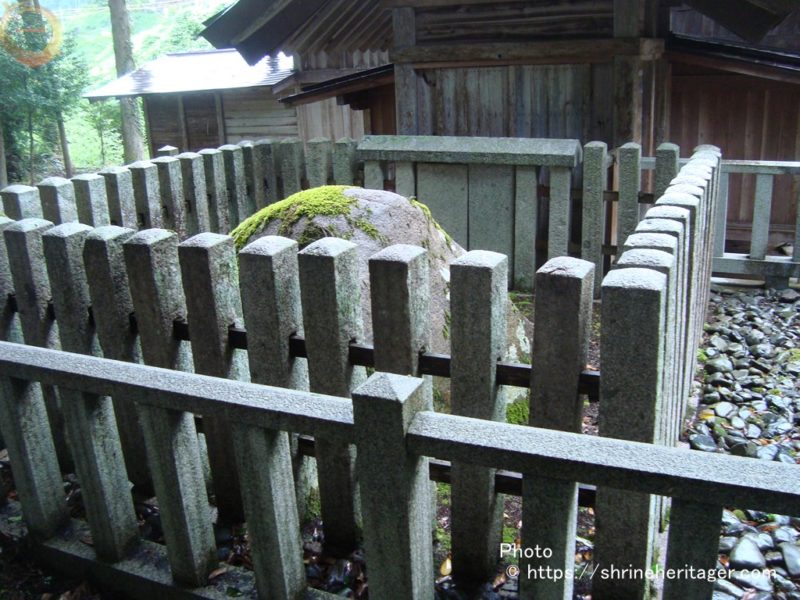
Iishi shrine (iishi shrine) is in the form of an old shrine of Izumo as well as Mankusen shrine (mankusen shrine), there is no main hall, and Iwa kura surrounded by tamagaki behind the worship hall is enshrined.
At iishi shrine, there are no "norenawa", "lanterns", "dog dogs", etc. usually found in the shrine.
This is a special custom that the form of natural faith called Iwa kura is conveyed to the present as it is, and this place is not used as a sacred place for the advent of life
It conveys the ancient ritual form of Iwa kura quite faithfully to the present.
And surprisingly, this "stone" seems to be getting bigger.
According to Kunio Yanagita, author of "The Legend of Japan", the following story is written.
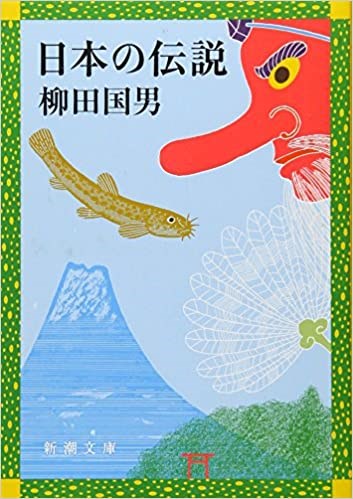
「 In the village of Nakano in Aki, the large rock in the rice field, which is two heights high, was called Izumoishi. It is said that while this was still a pebble, a person came from Izumo Province and it became bigger here (Geihan Tsukasa, Takasaka Village, Toyota District, Hiroshima City).
In Izumo Province, there was a big stone behind Iishi Shrine. After all, it has been getting bigger since long ago.
It is said that the shape of the stone seems to have rice, or it is because it is a stone that has fallen from heaven while still inside the rice bowl. (Hereafter Izumo Kokushiki internal company thought. Iishi-mura, Iishi-gun, Shimane Prefecture)
The reason why you can see that the stone has grown is that every time you remake the Aragaki around it, you have to add the previous dimensions to it.
・・・・・・・・・・・・・・」『日本の伝説』"Legend of Japan"
スポンサーリンク
【神社にお詣り】(Pray at the shrine)
About 8km from Kisuki Station via R314 Prefectural Road 176 About 15 minutes by car
Drive along Mitoya-cho, Unnan City and take Prefectural Road 176 (Kakeai Daito Line) to the side road to reach the approach to Sugigiri along the clear stream.
It sits on the right bank of the Iiishi River (also known as the takuwa river).
Arrived at飯石神社(iishi shrine)
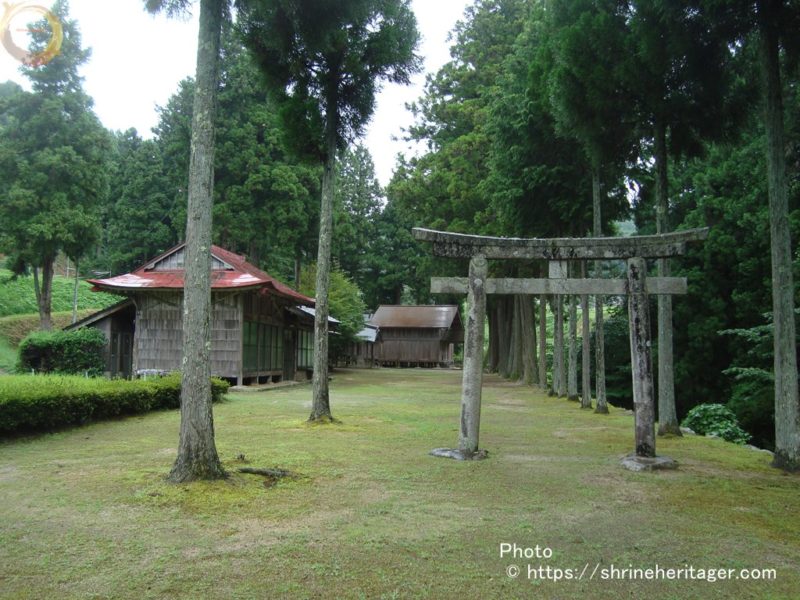
The Iiishi River (also known as the takuwa river) runs from north to south, and the precincts continue to the east of the river.
There is a guide board on the left and you can read it
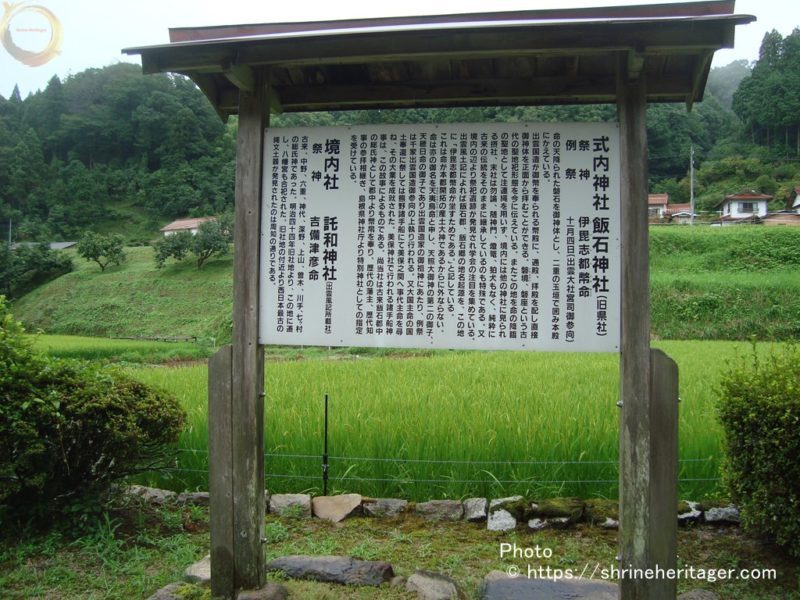
Give a bow and go through the torii
The shrine is facing west
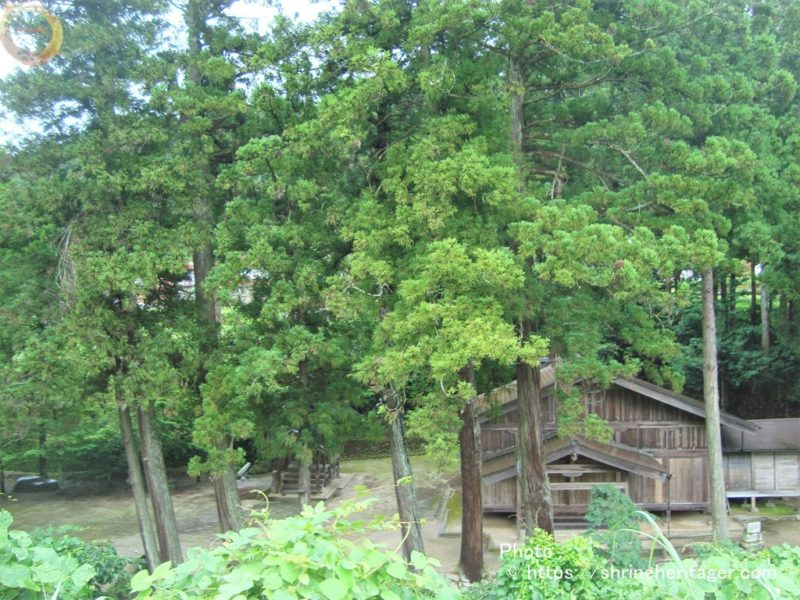
The front is境内社 託和神社《主》吉備津彦命(kibitsu hiko no mikoto)の本殿
The back is飯石神社(iishi shrine)《主》伊毘志都幣命(iishitsube no mikoto)
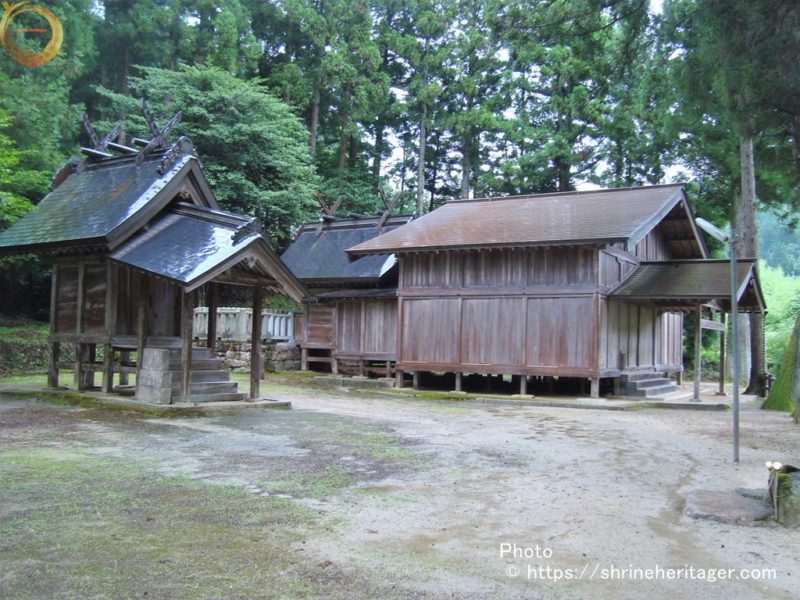
Proceed to each shrine
Give me a prayer.
When you reach the god of worship, where you worship God's power, pray with your hands together.
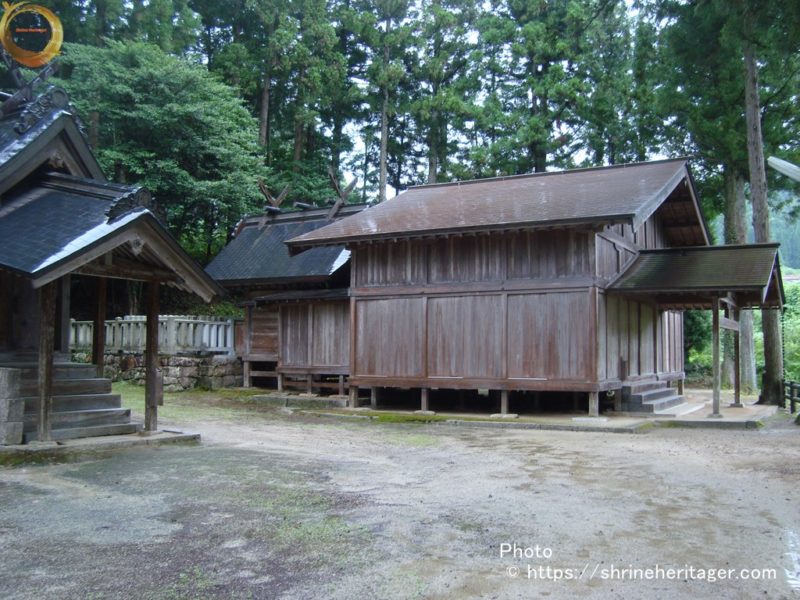
There is no main shrine at Iishi shrine. Behind the worship hall, the god is the "stone" that is said to have descended from the heavenly world.
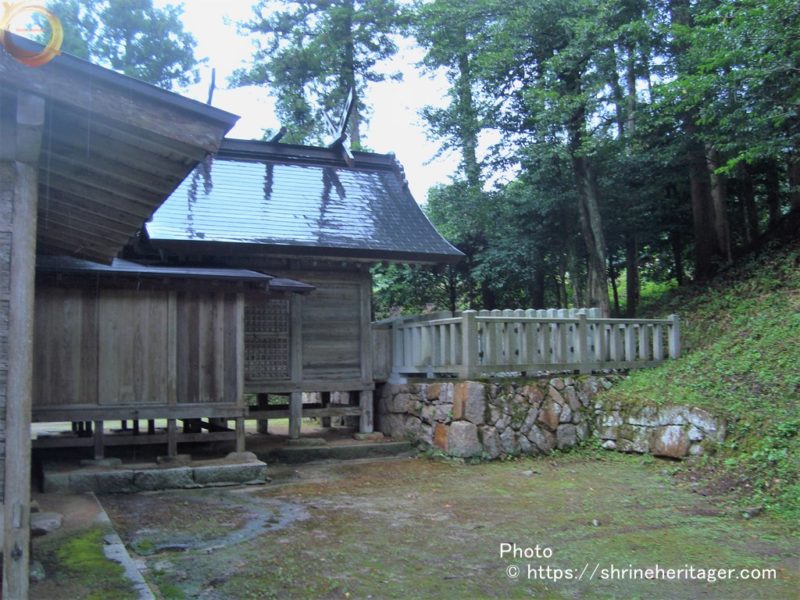
From the side of Aragaki, you can feel the "stone" around 4 meters.
I hang my head deeply and pray
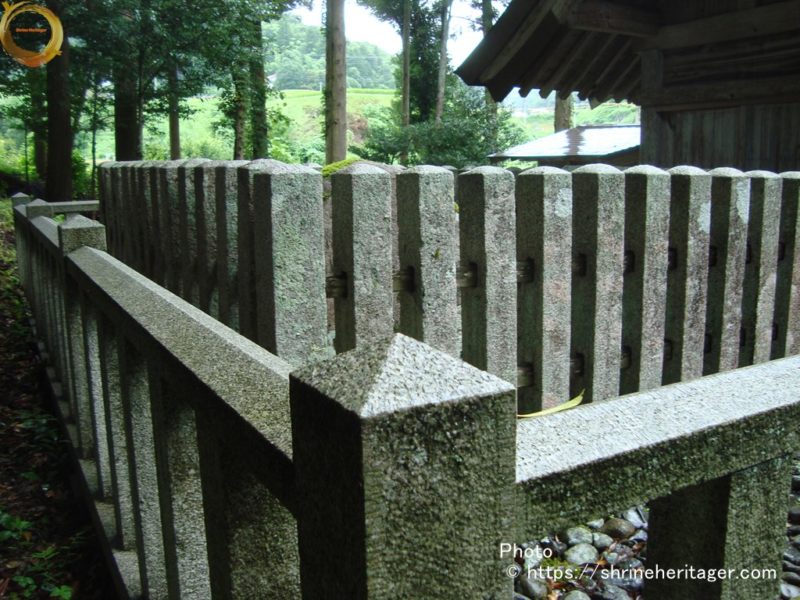
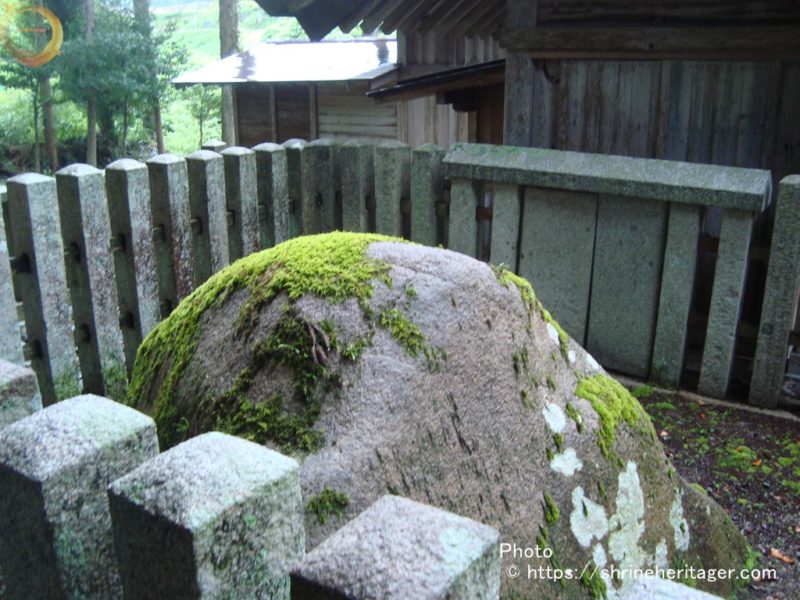
Return to the precincts, go through the torii gate, look back and give a bow
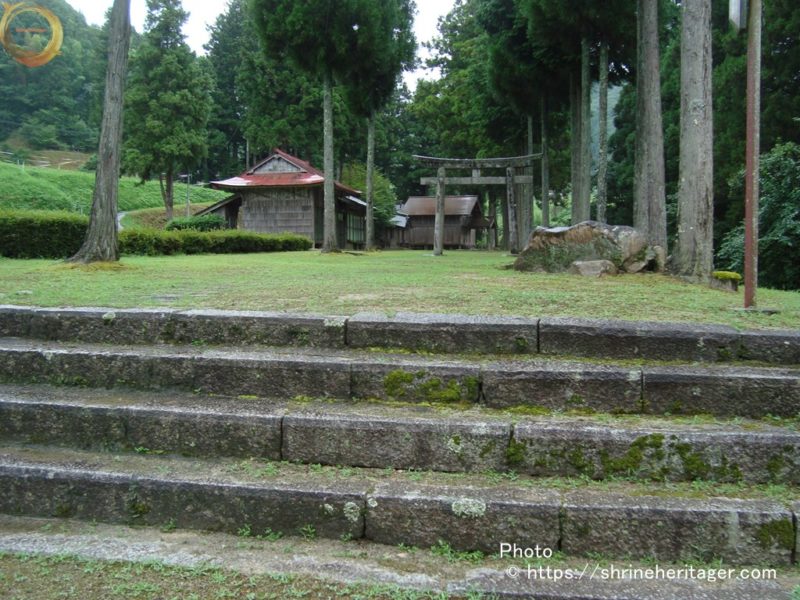
スポンサーリンク
【神社の伝承】(Old tales handed down to shrines)
Each document is handed down as follows
『出雲國風土記(izumo no kuni fudoki)』About the tradition written in Iishi-gun, Iishi-go
It is a tradition about the origin of Iishi no sato.
意訳
『 飯石郷(iishi no sato)
郡家の正東17里の所にあります伊毘志都弊命(iishitsube no mikoto)が 天からお降りになったところです
だから 伊鼻志(iishi)といいます 神亀3年に字を飯石(iishi)と改めました 』
『原文』参照 国立公文書館デジタルアーカイブ『出雲國風土記』 https://www.digital.archives.go.jp/DAS/meta/listPhoto?LANG=default&BID=F1000000000000003351&ID=&TYPE=&NO=画像利用
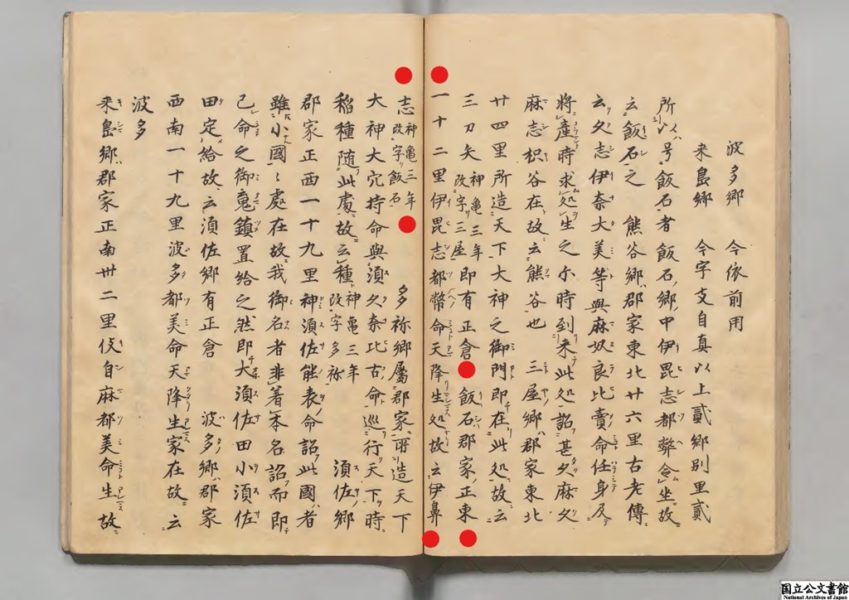
『雲陽志(unyo shi)』飯石郡 多久和(takuwa) にある伝承
『雲陽志(unyo shi)』では
「飯石神社(iishi shrine)」が「飯石社(iishi no) yashiro」
「託和神社(takuwa jinja)」が「託和社(takuwa no) yashiro」として記されています
意訳
『 多久和(takuwa) 飯石社(iishi no) yashiro往昔 一隕石があり 高さ3尺4寸をもって 周囲の様子は飯形を盛ったようなので「飯石」と云うと古記に伝わります
伊毘志都弊命(iishitsube no mikoto)が 天よりこの石と降って鎮座しました 往年 石の傍らに社あり
風土記 延喜式に記載されていて 乱世を経て以来 衰退し廃社し 祭りも絶っていましたが この石は確固として動じなく 今に至っても存在している里人は ことごとく神を敬い 石の由縁があることをもって社を再建しました
毎年9月15日 7座の神事 湯立て 獅子舞 御幸 流鏑馬があり 由来縁起は詳細です
・・・・・・・・・・・・・・・
・・・・・・・・・・・・・・・託和社(takuwa no) yashiro
風土記に所載され 吉備津明神を祀る
古老の伝えでは 多久和城主 秋上伊織之助 建立の社なり
天正13年(1585)毛利 大蔵再建の棟札あり
慶長2年(1597)拝殿 歌仙・・・・・・・・・・・・・
・・・・・・・・・・・・・・・・・・・・・・・・・・ 』
『原文』参照『雲陽志(unyo shi)』[黒沢長尚著]天保6 [1835]国立公文書館デジタルアーカイブ『雲陽志』写本
https://www.digital.archives.go.jp/DAS/meta/listPhoto?LANG=default&BID=F1000000000000002424&ID=&TYPE=&NO=画像利用
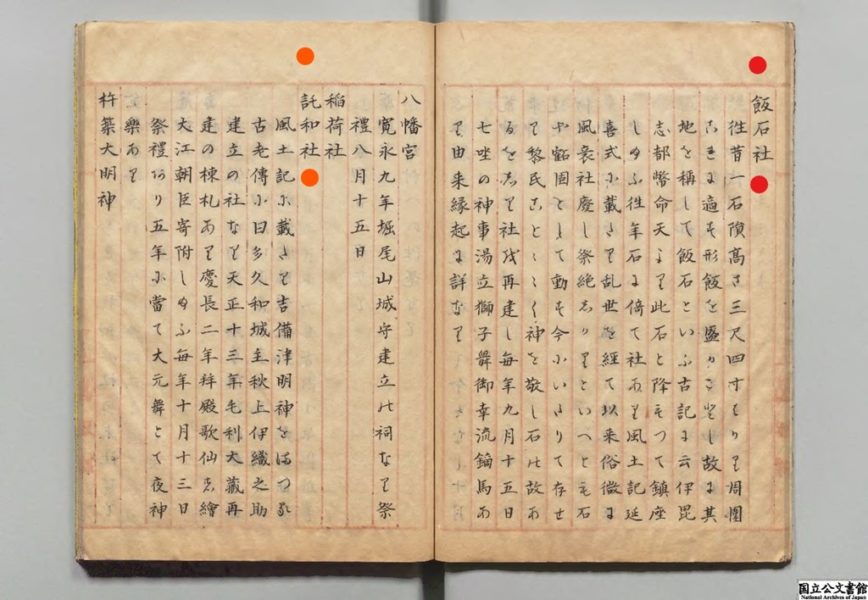
『出雲国式社考(izumo no kuni shiki no yashiro ko)』飯石郡 にある伝承
意訳
『 飯石神社(iishi no kamino yashiro)風土記に同じ 多久和村なる 飯石権現社なり
神殿の大きさ1間4方 拝殿 鳥居あり神殿の後ろに大石あり 形は飯の威持っている この石を祭る
然るに この石 昔より漸して 大きくなる故と云い伝えられています
周りの荒垣を改めて造るたびに 以前の尺より寸法を延べされて 石が納められていますこの社は 伊毘志都弊命(iishitsube no mikoto)を祭るなるべし
風土記に 飯石郷(iishi no sato)というのは
『伊毘志都弊命(iishitsube no mikoto)が 天からお降りになったところです だから 伊鼻志(iishi)といいます 神亀3年に字を飯石(iishi)と改めた 』とあります
こうしたことから 里の地名となっています・・・・祭日9月15日 』
※『出雲国式社考((izumo no kuni shiki no yashiro ko))』[選者:千家梅舎/校訂者:岩政信比古]写本 ,明治02年(1906)
『原文』参照 国立公文書館デジタルアーカイブ『出雲国式社考』写本 https://www.digital.archives.go.jp/DAS/meta/listPhoto?LANG=default&BID=F1000000000000040615&ID=&TYPE=&NO=画像利用
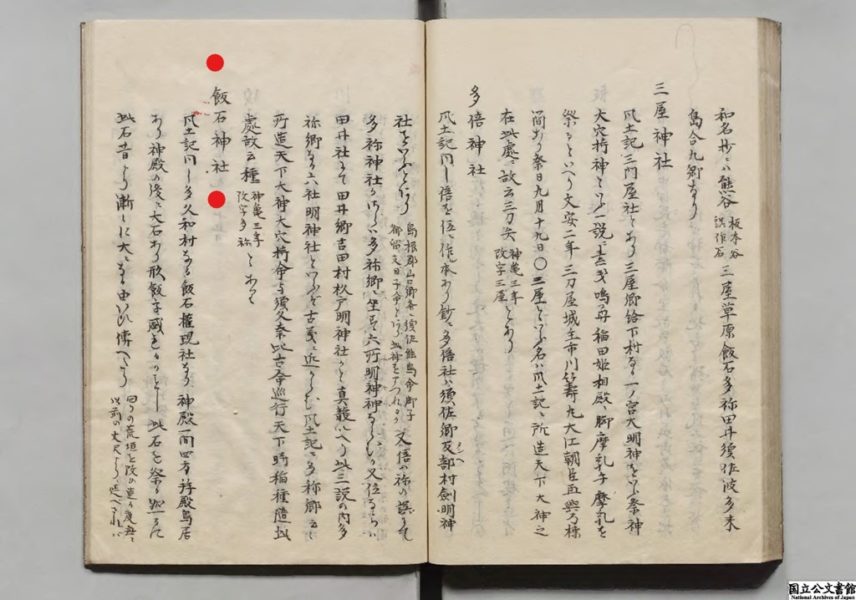
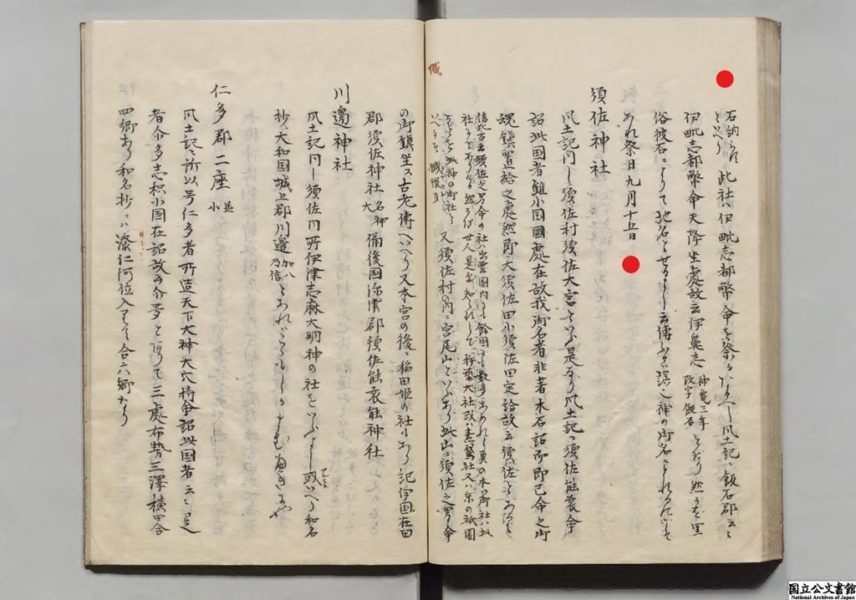
伊毘志都弊命(iishitsube no mikoto)の天降られた盤石を御神体として「磐座(iwa kura)」が荒垣で囲まれて坐ます
飯石神社(iishi shrine)に「拝 (hai)」(90度のお辞儀)
